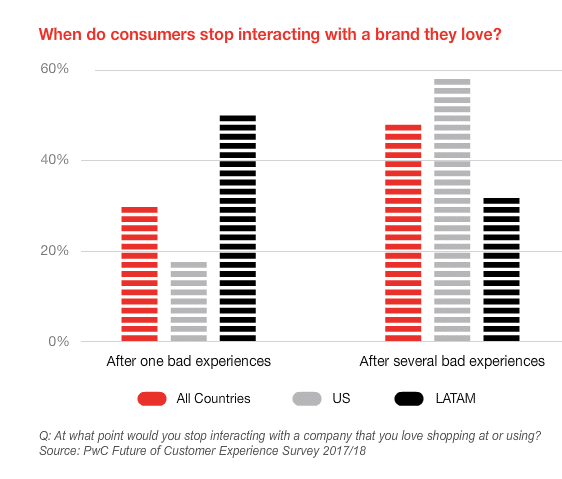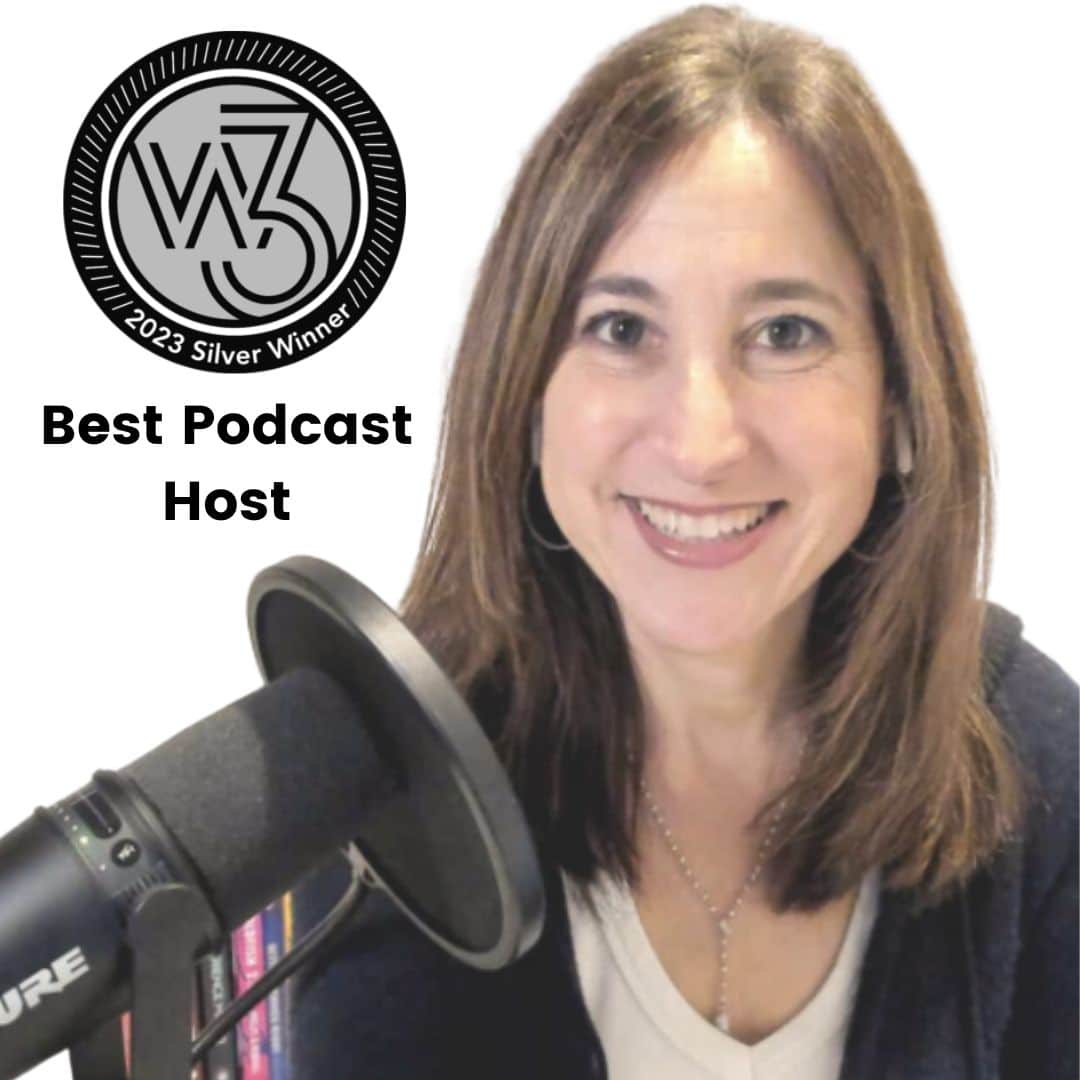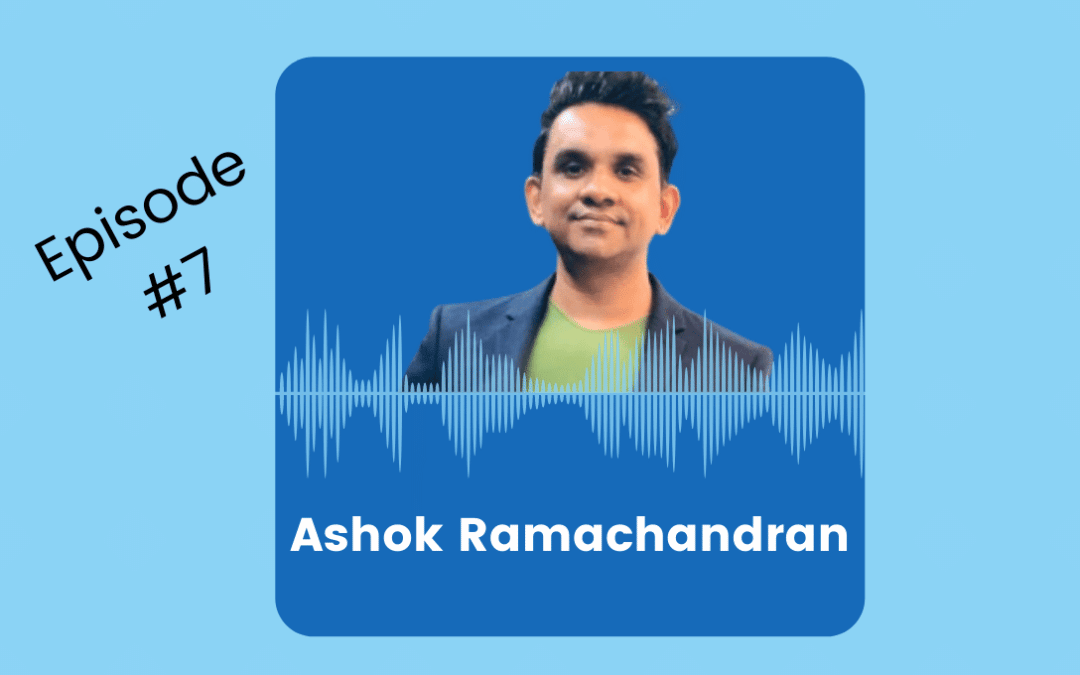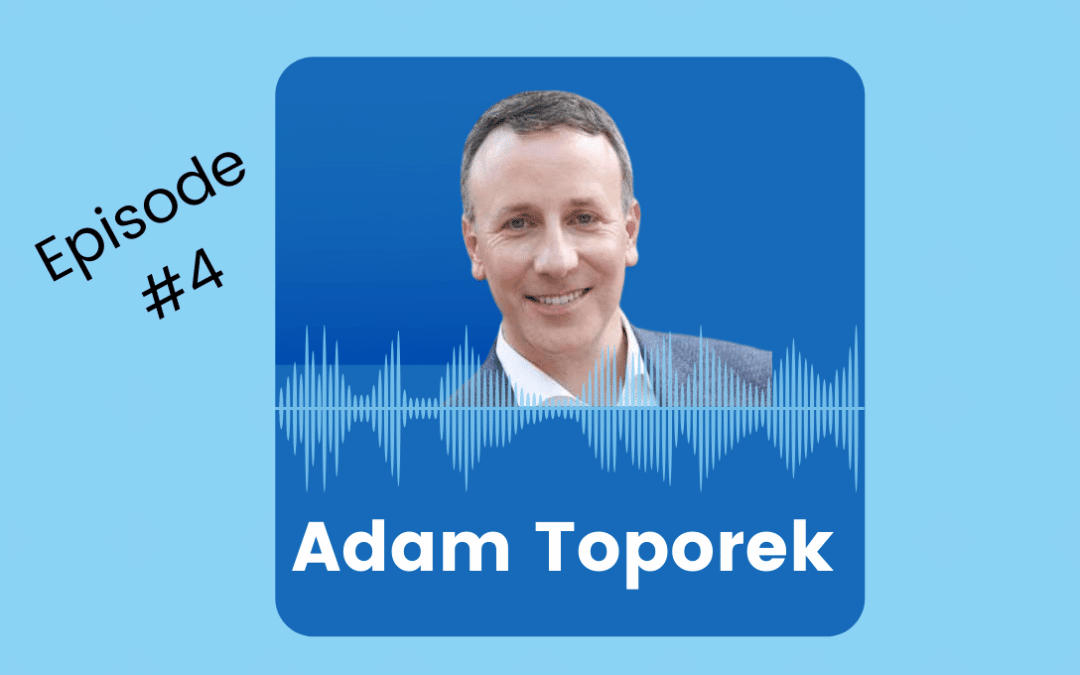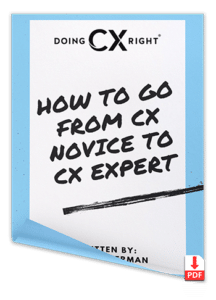Transcript- Creating a & Leading a Customer-Centric Workplace
Stacy Sherman 00:04
Welcome to Doing CX Right a podcast where we discuss how to differentiate brands by doing customer experience right, and that’s fueled by happy, valued employees. I’m your host, Stacy Sherman, an author award-winning blogger and keynote speaker, passionate to help you humanize business to achieve real results.
On today’s episode, you’ll hear my guest, who is the president and CEO of Schindler, India, who Ibelieve is a great example of doing leadership right, not just checking boxes and saying what to do. He’s walking the talk and shares actionable tips to support your success no matter what country you reside or company you work for, let’s get on with the show.
Hello, Ash. I’m so happy to have you on my show today. Good morning. Good night to you and good morning to me.
Ashok Ramachandran 00:59
Yes, Good morning, Stacy. And wherever people are watching from. Good morning. Good afternoon. Good evening. I hope everyone is healthy and safe.
Stacy Sherman 01:06
Exactly. Yes, that’s most important. I’m really happy to be talking to you today because you are a true, inspiring leader, both in the corporate world.
And also as a human being, who’s on a mission to inspire people. And I want to get to that because it’s all about experiences, employee experiences, customer experiences, and also we’reall working with different generations, gen Z, gen X, millennials, and so how do we all work together? So let’s dive deep and start with who are you? Tell listeners who you are and a fun fact.
Ashok Ramachandran 01:45
Sure. So, you know, I know when people asked me to introduce myself, I always say that my name is Ashok Ramachandran,, and I am here to create an army of leaders. And by the way, I happen to be the head of the Schindler operation in India, which for me is more of what I do more than why I do what I do.
So what I do is being running a company, but why do I do it to create an army of leaders? So that’s in a very brief nutshell, but just to give us a little bit more perspective, I was born and raised in India. And then I went to Australia to do my highest studies masters and then migrated to Australia.
So now I’m an Australian citizen expat rating in India with my family here. And, I’m, I’m enjoying running the organization here. A fun fact, a recent fun fact. I can call it that. About two months ago, I became a content sharing person. I don’t want to call myself content creator because I don’t have to create content.
I have a lot of content. I just need to share it with people. With the goal of helping, especially the 18 to 35 year olds who are impacted by pandemic severely. I was talking with one of my colleagues overseas in France. And she was in fact telling me that one of her neighbors daughtercommitted suicide in France because of COVID anxiety and stuff.
So I got a lot of people messaging me and asking me to share my wisdom, my experience, my knowledge to help them achieve success, become more stronger. So a recent fun fact is that I’m active on social media, sharing my experience and content to people to consume.
Stacy Sherman 03:42
So let’s break that apart for a second, cause that’s really powerful.
So one, you really know your, why. And so many people go through life, not really knowing why they do what they do. And so I love your sense of purpose and you’re a tremendous leader in a very important company. We happen to share that in common, the company, but it’s the fact thatyou, as a leader, are bringing your whole self to work.
Yeah. And that’s so important for leaders, anyone listening, and whether you have a leader in your title or not, you need to bring your whole self to work. So when you and I talked not long ago, you were on your way, or actually you had just finished going to some local offices. Talk about that because it’s a beautiful story about driving the employee culture.
Ashok Ramachandran 04:46
You know, I’m Stacy I’m sure you’ll agree that action in any organization doesn’t happen in a corner c-suite office. It doesn’t happen in that 46 floor overlooking Manhattan, you know, looking at the beautiful high-rises and maybe the water beyond that, I often believe that this is ivory tower that we can get stuck in.
So I’m a firm believer of being out there, talking to people. In fact, as the head of the company, I spend 70% of my time with people on people, topics, or along with people, because I firmly believe that, you know, when you drive people engagement or employee experience automatically you get customer experience, financial freedom, all kinds of results that you are trying to drive as an organization has achieved.
So of course, because the pandemic, I’m not able to do it too often, these days physically, but I happen to between some breaks of the COVID waves, I call it, when the wave took a break, I just need to do the break of the COVID wave and visit the nearest office, I could go and spend time with the team.
And usually we are used to doing business reviews. That’s what leaders do right? When you go to a branch. But this time my local regional head and myself decided to do something different. And what we did was we started the morning meeting 15 of his newly recruited talents who had just joined Schindler in the last three to six months.
And I got a chance to spend time with them, understanding their aspirations and goals and how can Schindler help them achieve their objectives. And after my team had arranged a workshop on the future of service business of elevators in India. And it was again, a group of experienced and young talents who were split into three teams and they had to present futuristic abilities of the service business. So it was again spent on talent discussions, innovation discussions. So I really enjoy it. And that’s all I did, you know, the whole day was spent on meeting them and then having lunch with the team. So my goal was to inspire them, to make them excited so that they can run the rest of the year chasing targets and numbers without feeling stress.
Stacy Sherman 07:11
Do you believe that culture starts at the top?
Ashok Ramachandran 07:14
All the time. There’s in fact, you know, a lot of people say, for example, Schindler is a great company. Or Schindler is a lousy company, whatever use objectives they use, what is Schindler? Schindler is not a person, right? It is not even a building.
In fact, if you think about it, it’s a paper registration, right? Schindler is a registered company under the companies act in various countries. So Schindler in US would be registered in the U S companies act or whatever is a local regulations as you call it. I often tell people what is Schindler? When you come and say, Schindler is so difficult or Schindler is so good. I said, it’s us. We are Schindler. You know, it is not an entity that we don’t know it. If you say that Schindler is not listening to people, look at yourself, are you listening to people? So that’s where anything has to be driven, whether it is employee culture or any culture, right. Customer culture. It’s always like that.
Right. What the boss wants. Everybody wants to do that.
So it’s that it is about the people. And that’s any listener anywhere you work. Big company or small company, it starts with. And that’s why I always say over and over again to everyone who will listen, you have a customer experience job, whether you realize it or not. And oftentimes people will say, no, I don’t. I’m the back office. I say, yes you do because what you do enables the frontline to be able to do what they do. Without you, they can’t. What are your thoughts?
You know, it reminds me Stacy of the good old story of NASA. I’m sure you know, this, you know, the guy who was sweeping the floors and NASA, when he was asked, what’s your job.
He said, I’m helping NASA to put a man on the moon.
Right. And, and that’s what it is. You know, if he can sweep the floors, clean people can come and have a good experience of working in Nasa. And then, it motivates them to get the technology required to put a man on the moon and that’s what the Americans did, like Neil Armstrong. So that’s what I’ve been.
I often talk about it, even in my intellect in India, for example, you know, we have people, we havehelpers, right? We have helpers at work who come and serve coffee and tea. You know, they arrange the rooms and which we don’t have the luxury in developed countries, so I often tell the person serving tea.
I said, you are as important as me. If you don’t serve tea and coffee to people on time, they’re not energized to continue working with full concentration so they can achieve the company’s objectives.
Stacy Sherman 10:03
I write and talk a lot about doing customer experience right, otherwise known as CX right. What does that mean to you? What best practices are you doing and leading others to do for customers? What does it mean to you?
Ashok Ramachandran 10:21
Doing CX Right starts with just listening to customers. If we can really and when I’m talking about listening, it’s not listening to reply, it’s listening to understand and you know, even yesterday, this happened. We were pitching to a new customer and this was a very big project coming up in Southern part of India. And my team started for the first 30 minutes, we were just going on and on and on about how good Schindler is. I would have liked the first half hour be thatwe started talking to them about the project, about questioning them, asking them to share. What are they looking for? What are their troubles? What are their past troubles? Then we go and pitch what we can do. Right? So we don’t do that enough. It’s about listening to understand what the customer needs. If you want to buy a digital screen, let’s say for example, you have a choice of iPhone, iPad, iMac. Now I can sell you an iMac because I will get a lot of money from you, but maybe you don’t need iMac.
Maybe you, all you need is an iPhone. So why do we not listen and understand what really the client wants? It starts from that. Right? And I think when you talk about doing CX right, 15 years ago, and now it’s completely changed, customer expectations are very, very different. So you need to understand what agenda we call as common core, but what I call as basics, you know, just do the basics, right? And a lot of people don’t even understand what is basic. We need to get that to understand, right? I mean, a customer calling you, for example, if you haven’t delivered a benchmark that you have said, they will call you to follow up. And a lot of times what we tend to do is to deflect the blame to them and blame it on something else rather than saying Yes, I’m doing it. And a lot of times it is as simple as communication, which we don’t like to do. Right. Bad news. So for example, you’ve called the plumber’s home. If he or she can’t make it at 10 o’clock, at least can they call you and tell you at 9 45 that they can’t make it, you know, maybe the car broke down, whatever.
I’ve heard these excuses people. Saying that, oh, you know, but I didn’t realize the petrol was going to be over. I didn’t realize my daughter had to be dropped in school. I’m like all that is fine, but just let me know, communicate with me. Talk to me, tell me what’s going on because I’m waiting for you. So for me, that’s the basic
Stacy Sherman 13:06
Yes.. And what I love doing is speaking to people in different roles and actually having them walk in the customer’s shoes and paint a picture and then say, how would you feel? How would you feel if your washing machine is broken and mechanic comes, walks right through your door, doesn’t say, hello, dressed inappropriately, drags mud on your floor. Does the job. Doesn’t tell you what was done, sends you a bill. How do you feel? It’s amazing when you put it in that context, people then get it, and like you said, and myself, you don’t need many degrees and academics to know that we must get the basics right.
Ashok Ramachandran 13:58
Is it the same in the US, like in India, you know, we have this corner shops. It’s now extinct getting extinct very quick, right? It’s not, I mean, there’s not a lot of them left anymore, but theseare, I think I’ve heard in Australia, for example, the good old bread and milk shops that used to be in your neighborhood, your neighborhood stores, the small stores, not the Walmarts and the, the big chain.
These guys, they know us so well. You know, they know your family, they know your brother, yoursister, where you’re studying. I mean, you know, I still, when I go back to Chennai where I grew up, the lady who used to sell flowers still is there, you know, she’s not become a grandmother. When I met her, when I was growing up, she was like a young girl.
Now she got married, she’s got a daughter who’s got married and she knows everything about us, right. That is customer service. And she’s not educated. She’s not even going to school.
Stacy Sherman 14:54
Yes. I love that example. So there are becoming less of those. They still exist, and we obviously need to support those local businesses at the same time like you said earlier, it’s about people. So even if it’s Starbucks, which is a corporate chain, but they are customer centric, you do walk in, especially locally they know before I walk in their door. I mean, the app is very intuitive. I walk in the door, they say, hello, if there’s a mistake, they don’t ask questions. They just do it over again. And the whole experience, which is why I pay extra than McDonalds. So the point to this, it’s a great topic because you can be a small local shop or you could be a big corporate brand. People are people, people buy from people they like and trust.
Ashok Ramachandran 15:54
Correct. Well, you mentioned about any best practices. I want to even not share as a best practice, but a very simple thing that I have implemented in my organization here. Every customer deserves a proactive communication at least once a month from us, not when there’s a problem when, when there’s no problem. And yesterday, in fact, one of my branch managers, Chad, shared a customer’s message. It was an angry customer a year ago. You know, he managed to fix the problems. But the funny thing is, after that every month he drops the customer a WhatsApp message. Just taking on the customer. Hey, Mr. Customer, is everything fine? Is there anything that is worrying you about the lifts that I need to be aware of?
So he was doing it every month. The customer is replying. Now two days ago here, again, messaged for this month for July. And the customer sent him leads for about 30, 40 elevators. You know, I mean, like that’s what I tell them, you know, just. Share even a small little message. Hey, Mr. Customer, I’m thinking of you. That’s all. And you saw that other day on LinkedIn. I posted about the salesperson, you know, the small, small things he used to do. Just drop a cake when it’s auntie Suzy’s birthday you know who’s a member of the building society. Small things go a long way. So that’s what I would call. I don’t even want to call it a best practice, but I want tocall it as basics that we can do really well.
Stacy Sherman 17:27
Yes. And I also call it humanizing business. It’s not hard. It doesn’t cost any money to say, thank you. It’s seconds to say thank you. It’s seconds to say. I haven’t forgotten about you. And I believe somebody today listening to this will actually do it and because it’s a low level of effort, as I like to say in customer experience metrics and such.
So, two more questions going back to gen Z, gen X, all these different generations. How do we work together because we are used to email, they don’t read email. They’re about texting and Snapchat and everything. So, what’s your views on how do we all work together because we canlearn from them and they can learn from us.
Ashok Ramachandran 18:22
I think the most important thing, Stacy is not to have any ego, any bias on, I know more than you and you know, more than me those days, you know, whenever you talk to these experienced people, they will start off with, or during my time and, and things like that.
Right? So this can be very irritating for the younger generation. And one of the things I’ve learned, Stacy is no one. Everybody is behaving. The way they are. That’s it. And what I mean by that, you know, the experiences that you have had, the upbringing that you have had, the life thatyou have experienced is molding your personality, you know, Indra, Nooyi the previous CEO of Pepsi worldwide, who lives in. I’m sure you must’ve heard of Nooyi. She speaks about this. That everyone is a victim of our upbringing, which means that. So let’s say that somebody feels that Stacy is, is a very angry person. Now it’s not like you wake up in the morning and decide that I’m going to be angry, right?
No one desides to be the way they are. It’s their life experiences. So if we have to survive and thrive, not only survive, I think we need to appreciate and look at people from a space of non-judgment from a space of acceptance. And then I think this will all close easily.
Stacy Sherman 20:00
I also love talking about diversity, inclusion, equity. I also going back to what you said about communication. We need to communicate the way others want to be communicated to. So we have to be mindful when we’re talking to older, younger generations. If we want to make a difference, we have to go and meet them where they want to be met.
So the last question today, cause I could go for hours with you. I love talking to you. If you could go back in time to your younger self, let’s say 20 years old. What would you tell you that you know now?
Ashok Ramachandran 20:42
I would tell myself to get a lot of life experiences, number one, and not try to box myself to do just one thing. And not to be impatient to try and get ahead in life.
I think this generation during at least my time, we were so much about getting a job and moving on today’s generation. I’m so envious. Right? They’re trying different things. They’re dabbling ondifferent things. They’re studying, they’re working, they’re doing a startup stuff. They’re on social media.
That’s the first thing. Right? Try different experiences. Never be shy of that. When you’re doing that, it’s about acquiring more skills, varieties of skills. I would tell my younger self to travel a lot and know the world break barriers of culture and everything else. Right. I mean, we need to be more worldly, I would say than I think the world’s becoming more and more parochial, which is a bit scary.
Right. There’s a lot of nationalistic spirit happening in every country in the world. Now everybodywants to kind of, you know, they say like, be in thereby Indian or be American by American. I think we need to be a bit more accepting of everyone. So that could be one another thing that I would like to tell myself, travel more, accept people, everyone, and try to, I think, try to live happyand not worry about tomorrow all the time.
Stacy Sherman 22:11
That’s beautiful. I would add one more thing, which is to pay attention, but don’t let the naysayers get in the way. The people that tell, you no. Be mindful. Cause there’s a lot out there. There’s more people that tell you no than celebrate your successes. And I’ve seen that over my lifetime. So I think that’s important for listeners because when there’s a will, there’s a way and being fearless yet sensitive to where you live and the political environment is smart.
Well, thank you so much for being with me today. And I know that our listeners are going to get so much value. Where can they find you after this session that they hear?
So they can find me on LinkedIn as , or they can find me on Instagram and Twitter as Ash Ramachandran. And I have a YouTube channel as well.
And, I will add the links in the show notes. So it’s easy. We’ll make it a low level of effort for people to find you. Have a wonderful day.
Ashok Ramachandran 23:26
Thank you so much for inviting me to this session. I hope the viewers are going to enjoy listening to us, and if they have any questions, they can connect with us and ask any followup questions.
Stacy Sherman 23:36
Thank you so much for joining today. I hope you will apply the lessons shared and also requesting if you would leave a review on apple. Head over to Doing CX Right to learn more waysto connect with me and improve your CX until next time. I’m Stacy Sherman, Doing CX Right.







